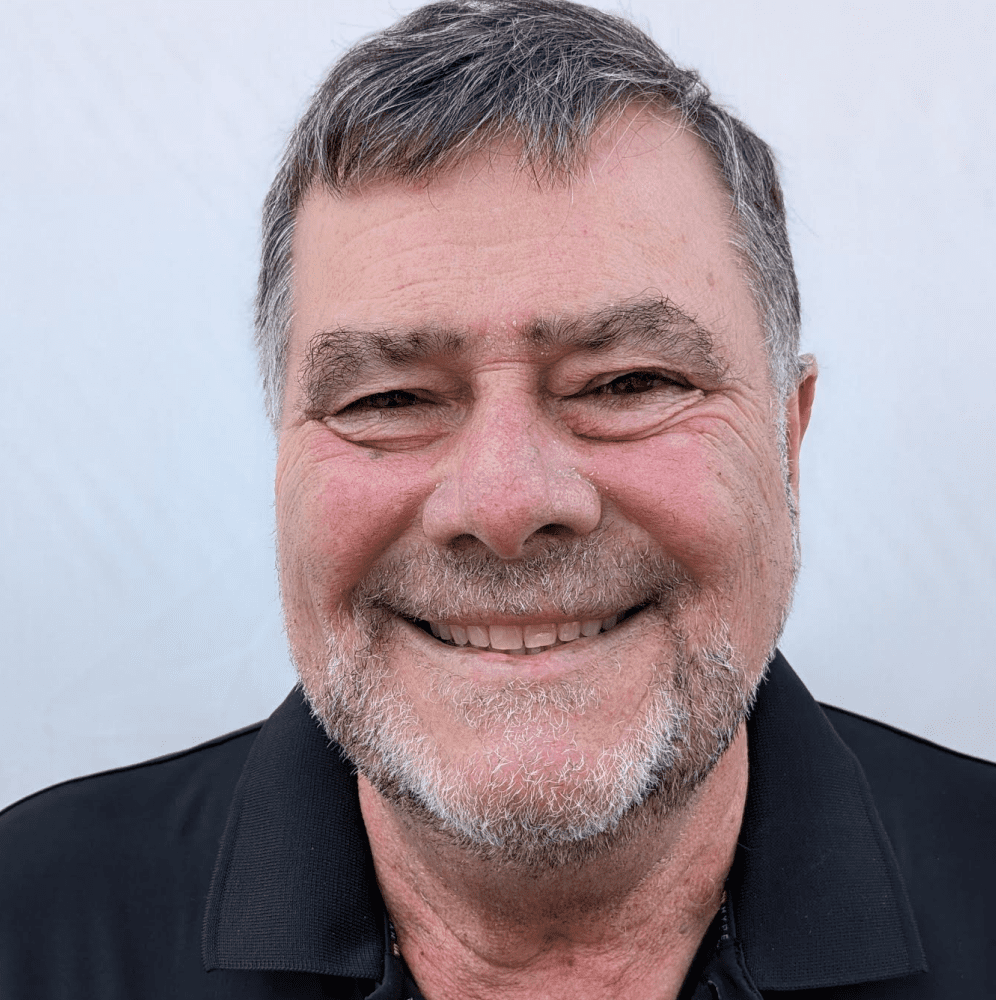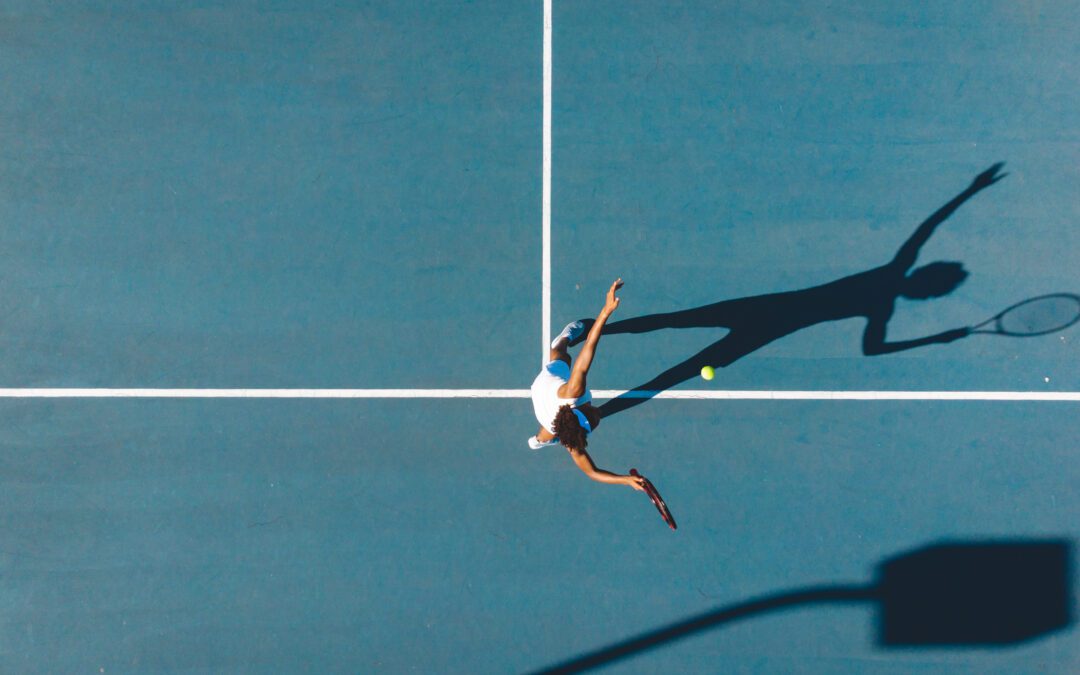An often-overlooked aspect of growing tennis is reaching out to players with physical and cognitive challenges.
There are about a million people in this country whose tennis has been impacted by significant mobility and/or cognitive impairment, and at any moment, any one of us could become a part of this group.
I’ve worked with professional players, college players and many juniors, but I’ve been struck by how rewarding it is to work with the adult and senior population. This has challenged me to re-think both what I teach and how I teach it.
Each student is different. They have different goals and different learning modes. They also experience a variety of vision, balance, mobility and other challenges. Sometimes they are not even aware that they have some of these limitations.
Tennis is a game of geometry, physics and psychology. By adapting your teaching methods, you can help those older players and players with mobility/cognitive issues enjoy the sport for a lifetime.
Geometry
Players with limited mobility, whether senior players or adaptive athletes, are likely going to be playing mostly doubles. In fact, they are great candidates to become doubles specialists.
Since there is less court to cover and the movement is mostly up and back instead of side to side, it makes it much gentler on knees, hips and lower back. (If getting four players together is difficult, there are other forms of “doubles” tennis , using only two or three players.)
Here are some tips that might help older players, and players with mobility issues, use the geometry of the court in their favor:
- The control of patterns in doubles can easily be understood by visualizing the court split into a left half and a right half, with each partner responsible for covering their half of the court from baseline to net.
- Have your players visualize the court split in half horizontally, from sideline to sideline.
- The receiver standing near the service line is able to attack balls that are in the higher part of their strike zone and defend when the ball is low.
- Placement of aggressive volleys and overheads should usually be through the center.
- Low volleys and any volley or overhead that is difficult to reach should be played conservatively, either deep or short, and away from the net person.
- If both players are at net, the difficult volley goes back at their feet to make them hit up to the opponent.
- The goal of the server or receiver is to take control with a placement that allows coverage of the court effectively and maximizes a player’s strengths against his opponents’ weaknesses. For instance, by placing the serve down the center, the receiver’s ability to hit a short, wide shot is taken away.
- Geometrically, players should hit depth to depth, angle to angle. Your players should center themselves in the middle of their opponents’ possible shots.
- The longest distance to cover in doubles is up and back. The center of that distance is near the service line. A player with severe mobility limitations may only be able to take a few walking steps at a time. It may take them two or three shots to achieve a geometrically centered court position.
- Taking steps forward into “No Man’s Land” while the ball is in the air is a tactically sound move to counter short shots. After a player makes a shot, he or she should continue moving forward, keeping in mind the deeper the shot, the more steps forward they can take.
- Stop, or split-step, as the opponent is about to contact the ball, to be able to read and react to the shot, and to stay balanced.
- For players with limited mobility, help them develop deep drives, short angles, drop shots, lobs, touch low volleys and half volleys.
There are about a million people in this country whose tennis has been impacted by significant mobility and/or cognitive impairment.
Physics
Players with mobility limitations may not be able to move with pro-level speed, but they can still add some professional tactics to their arsenal.
Pros produce powerful groundstrokes by using their body’s kinetic chain, pushing against the ground with their strongest muscles first, their legs. The force is transferred up through the body, ultimately creating great racquet-head velocity. This is needed to produce the topspin they need to control the power and keep the ball in the court.
- Taking shots in the higher part of the strike zone and hitting flat, or even with slice, is very different from the usual singles practice of letting the ball drop to about waist height before hitting up with topspin.
- Taking the shot at shoulder height allows players to stand further inside the baseline and shorten the distance to their opponents.
- Changing the physics of the stroke from topspin to flat or slice changes the geometry of the court by shortening the distance between a player and his or her opponents. This is very different from the need to hit deep in singles.
- While Western and semi-Western grips are great for hitting topspin, they require changing grips to volley effectively. Eastern or Continental grips are perfect for hitting flat or slice as well as for volleys.
- Another benefit of using an Eastern or Continental grip is that they create a much larger margin of error through the hitting (contact) zone.
- Good doubles players keep the ball low. Those shots need to be handled with touch, which requires being on balance. A short backswing and—most important—proper placement of the back leg, will help control low volleys and half-volleys.
- Another effective shot in doubles is the slice lob (or touch lob) over the opponent’s head. This will allow your player to move near the service line, better able to handle any shot that might come back.
- The serve and the return are the two most important shots in tennis.
- In doubles, the “bread and butter” serve placement is right at the returner, which limits their options on the return.
- Your player should take a full, slow backswing on the serve to build momentum on the racquet head, then reach up to a high contact point. Snapping the wrist on the serve, as many pros teach, may produce an occasional ace, but also will produce many more faults.
- Serve placement is more important than power. A spin serve, either slice or topspin, is effective since the spin can be tough for the returner to control.
- A savvy player can do a lot of damage when returning serve. One tactic is to take the return in the higher part of the strike zone, flatten out the shot, then hit it back to the server. Taking the return at shoulder height lets the receiver move forward to an aggressive court position as well.
- Using the Australian formation, with both players on the serving team on the same side of the court, can neutralize an opponent’s strong crosscourt return and direct the patterns to maximize the server’s strengths. If an opponent has a fearsome return on the ad side to a righty’s backhand, playing Australian will force the returner to hit over the highest part of the net, into the shortest amount of court and to the server’s strength, the forehand.
Psychology
People play tennis for many reasons. Usually, as people age, they get a better sense of themselves and what makes them happy.
- Ask questions so you can better understand your players’ goals and motivations. Why are you here? What do you want to accomplish? How will you measure success? What are your strengths and weaknesses, both on and off the court? What are your long-term, intermediate and short-term goals?
- A player should evaluate his or her skill sets to help forge an achievable game plan to reach their goals.
- They should also evaluate their life experiences. Strengths and weaknesses don’t only apply to forehands and backhands.
- For instance, an engineer or physicist may be able to get a deeper understanding of stroke production by drawing on their knowledge of the laws of Newtonian physics. Similarly, Bernoulli’s principle describes the relationship between pressure and velocity of a fluid; this relates directly to the creation and use of topspin and slice. An accountant may evaluate the efficacy of their tactics by analyzing the percentage and nature of their winners versus errors. A business person may utilize their problem-solving experience to formulate or alter match tactics.
- Players need to evaluate their ability to focus on the present moment, to be in the “here and now.” Knowing their limitations will help craft a game plan that will maximize their strengths.
- When trouble looms, make sure your players slow down, have a game plan, and play in the “here and now” by going back to their rituals, visualization and breathing. They need to take control of what is under their control.
Bob Ingersole
Director of Camps
A USPTA P1 and PTR certified pro, Bob Ingersole is the president of Ingersole Events & Tennis Management LLC, president of the USTA Eastern Junior Tennis Foundation, MetroTennis CTA and director of Advantage Camps. A native of Australia, he moved to the U.S. in 1976 after playing on the pro tour. He’s taught several hundred nationally ranked juniors and adults and 20 professional tour players. As a past President of USTA Eastern, Ingersole serves on the section Board. He is currently a member of the USTA Junior Competition Committee. Among his awards are induction into the USTA Eastern Tennis Hall of Fame and, in 2018, recipient of the USTA Volunteer Exceptional Service Award.


